Vanessa German: “Power Figures” Armed with a Mantra for Justice
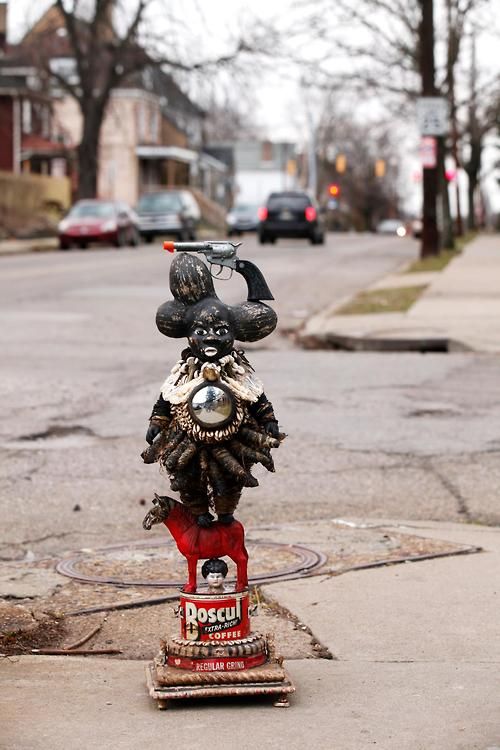
pistol unwhipped © Vanessa German, 2013. Courtesy of the artist and Pavel Zoubok Gallery, New York.
Street death is not romantic and I think it has been romanticized. It is not a trauma that is treated like a trauma; we don’t treat victims of trauma with the care that research and medicine tell us they have to be treated with, which is then another layer of trauma. — Vanessa German
BY JAIMEE SWIFT | THE GUN ISSUE | SUMMER 2017
Charleena Lyles. Tanisha Anderson. Yvette Smith. Miriam Casey. Shelly Fray. Darnisha Harris. Malissa Williams. Alesia Thomas. Shantel Davis. Rekia Boyd. Shereese Francis. Aiyana Stanley-Jones. Karen Smith.
It can be a unique yet daunting position to be a Black woman in America. The cognitive dissonance of having to survive in a world which renders you inferior but relies so heavily on your strength can be overwhelming. The intersectionality of oppressions—your race, gender, sexual identity, class and more—are often overlooked as afterthoughts; in which you are constantly fighting and advocating for a place and space in a world which does not recognize your existence. Rendered as a “superwoman,” you are expected to save everyone but yourself. In the face of pervasive violence, who is supposed to save you?
Tarika Wilson. Kathryn Johnston. Alberta Spruill. Kendra James. Sandra Bland. Korryn Gaines. Chyna Gibson. Ciara McElveen. Jaquarrius Holland.
Vanessa German celebrates the strength, the lives and the overall essence of Black women and girls through her powerful visuals, sculptures, and artistry. An award-winning multidisciplinary artist, German uses both personal experiences and social issues related to gun violence and state-sanctioned violence to craft artistic narratives that passionately and fearlessly blends art, activism, and social justice. A poet, performer, photographer and sculptor, her eclectic and ethereal artwork unabashedly speaks to the reclamation of power and agency of Black women and girls, in a world that has tried to thwart their potential via violence; “a for us, by us” stance that, just like German, is in all ways nuanced and always unapologetic.
“Whether as a Black person, a woman, a lover, a queer woman, a sister—any issue, any concern, any ailment, physical, political, any splinter that cuts into my being, can be worked out through the creative process,” she says. “This is why I obsessively draw, paint, and create images of the Black female body, out of ordinary sacred, everyday objects in ways that pronounce the holiness and pronounce the power of creativity and the being.”
Defined by German as “power figures,” her bold and brilliant sculptures of Black women almightily adorned with random artifacts—including household objects, African beads and antique items—gathered in her predominantly, African-American neighborhood of Homewood in Pittsburgh, Pennsylvania, showcases the profound majesty and dynamism of the Africana aesthetic. If art is an extension of the artist and is a reflection of their vitality, then German’s work is meditative of not just the physical, but also the spiritual and ancestral.
“My aesthetic is something that is driven by the Africana aesthetic and that comes from a place of deep love,” she says. “The truth is that my people are with me and by my people I mean, people who made me, who are no longer physically present,” German continues. “So, when I feel like I’m trusting my instincts, I am listening to my ancestors.”
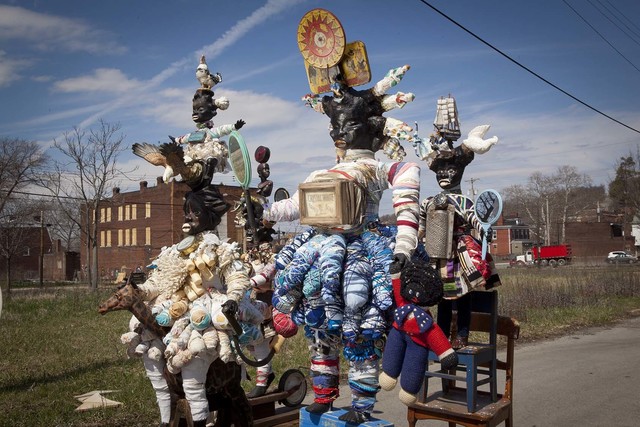
Lessons On How to Ride the Eagle, the secret of charm is color, The Greater © Vanessa German, 2016.
Courtesy of the artist and Pavel Zoubok Gallery, New York.
For example, German’s Lessons On How to Ride the Eagle, the secret of charm is color, The Greater (2016), a mixed-media installation from her “i am armed. i am an army” solo exhibition at the Pavel Zoubok Gallery in New York, displays three power figures in chariot-like fashion, garnished in various multicolored hues, ripe and ready for battle, is very reminiscent of Yaa Asantewaa; the Queen Mother of the Edweso tribe of the Ashanti people in Ghana, who would lead an army of 5,000 women and men against the British.
Her power figures—especially those holding guns like in her dynamic piece pistol unwhipped—conjure up spiritual manifestations of Harriet Tubman, in all her courageousness, guiding slaves to freedom with a gun loaded, cocked and ready to use on those who considered returning to the bondage of slavery while on the Underground Railroad. A counter to white supremacy, an ode to racial pride and gender equity, and a mantra for justice, German’s work details both the strength and resiliency of Black women, who, in spite of chronic marginalization, endure and flourish.
♦22% of homicides for Black women are outcomes of domestic violence and intimate partner violence, making it one of the leading causes of death for Black women between the ages of 15 and 35.
♦Of the 21 reported homicides in the transgender community in 2016—many by gun violence—95% were people of color and 85% were women. Black transgender women continue to be murdered at disproportionate rates.
However, to be a Black woman in America is more than living in a state of weariness. There is glory; a resilient glory that transcends from the spirit of Black women who are alive and from those who are no longer in the physical. Learning from mothers, sisters, friends, lovers and partners, being a Black woman, there is always room for celebration. Because in spite of the violence enacted on Black women, even in physical demise, they cannot kill the spirit—the spirit of resistance. Whether through political mobilization, spoken word, or art, there are Black women around the world who are ensuring the memories of Black women and girls lost and the presence of those who are currently here, are not overlooked or in vain; as they celebrate daily through their various mediums that in wake of any outcome of police brutality, racialized state violence and gun violence, something has tried to kill the spirit of Black women and failed.
“The power of femininity and the power of being a creative is something that has been a part of my entire life,” German says, who was raised in Los Angeles, California and Loveland, Ohio. “My mother was an artist and from a very young age, I understood that your life is in your ideas and you are able to negotiate anything through the resource of your creativity, your brain, your body, and your imagination.”
While German features Black women holding guns as a metaphor of power, it also symbolizes a need for protection; a protection of both the divine and physical. Moreover, it is indicative of the violence that constantly surrounds and is heavily enacted on Black women and girls, as many stand at the intersections of violence. While twice as many women are killed with a gun used by their husbands or intimate acquaintances than are murdered by strangers using guns, knives, or any other means, Black women experience the highest rates of intra-racial violence than any other group. They are “almost three times as likely to experience death as a result of domestic violence and intimate partner violence than white women” according to a 2014 article in Time by Feminista Jones titled “Why Black Women Struggle More With Domestic Violence.”
“I try to take it as personally as I can,” German says, reflecting on national-level, police shooting deaths of Black women. “I have such a vivid imagination. I imagine places, I imagine sites, [and] I imagine sensations. I superimpose those times when police have banged on my door with sounds of police banging on Korryn Gaines’ door. I am also tired of the push narratives and comments that Black folks are worthy of the terrorism perpetrated on them.”
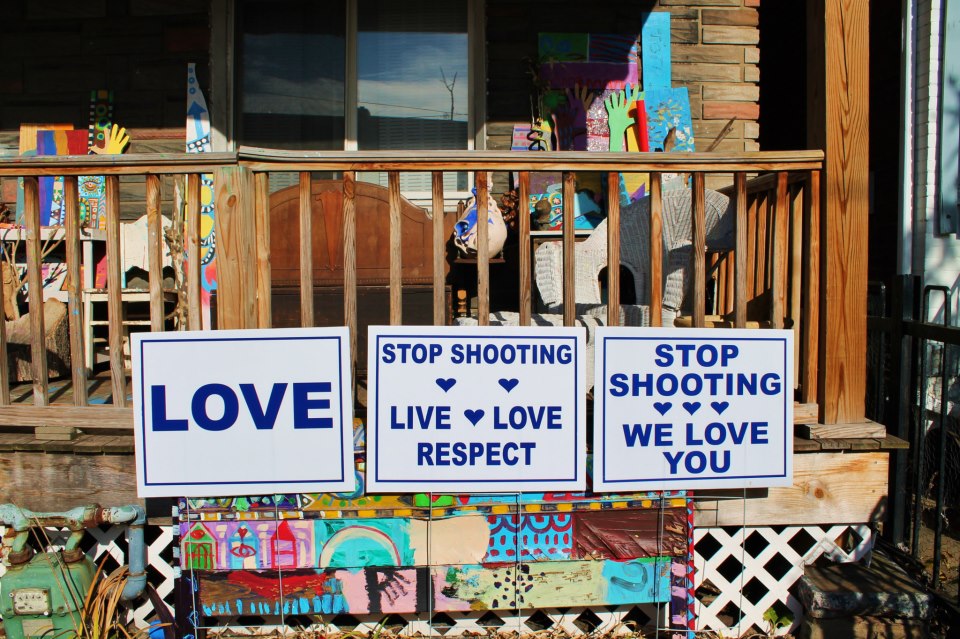
Stop Shooting, We Love You © Vanessa German, 2013. Courtesy of the artist.
While German is gravely affected by racialized state violence, she has also experienced gun violence face-to-face in her neighborhood of Homewood. She offers that the encounters are anything but glamorous.
“There is sorrow and trauma. Street death is not romantic and I think it has been romanticized,” German says. She sighs. “It is very difficult to watch a person die in the street. It is not a trauma that is treated like a trauma; we don’t treat victims of trauma with the care that research and medicine tell us they have to be treated with, which is then another layer of trauma.”
Disturbed by the constant doom of gun violence and death in Homewood, German created Stop Shooting, We Love You signs as part of neighborhood movement to spread the power of love, which she fundamentally believes can revolutionize any form of negativity—both big and small.
With the onslaught of racism, sexism, misogyny, misogynoir, policy brutality, gender-based violence and anti-LGBTQ sentiments, German’s gun-toting, power figures not only represent Black women and girls writ-large, but also, the women of color in her neighborhood of Homewood, who also experience violence first-hand. Here, German’s personal, physical, emotional, and spiritual connection to artwork and to Homewood induce Sojourner Truth’s powerful “Ain’t I A Woman” speech; as everyday, German’s work reinforces that even through turmoil, Black women and girls have a place in this world. Their strength and agency is undeniable. They are loved. Their lives and agency matters. They are divine. And they too, are women.
“We are reconnecting places that are ruptured,” German says. “Even in girls that are so young, there is this rupture of understanding of their inherently beautiful value as a human being. And I make these figures to show that as a Black female, there is an immutable remarkability; that you are just remarkable all by yourself.”
This is one of the reasons why she created ARThouse, an artistic sanctuary for radical, holistic healing and self-care in Homewood. Promoting love, nonviolence, and justice, ARThouse is an extension of not only German’s affinity for all things artistic, but for all things transformative and all things beautiful.
“It took me a long time to walk along the street again where one of the [shooting] murders happened. A kid in the neighborhood wanted to talk about the hurt and fear, but there weren’t a lot of places for that to happen because they are told not to talk about if for several reasons, you know?” she says. “So I had to learn to talk about these difficult occurrences with young people.”
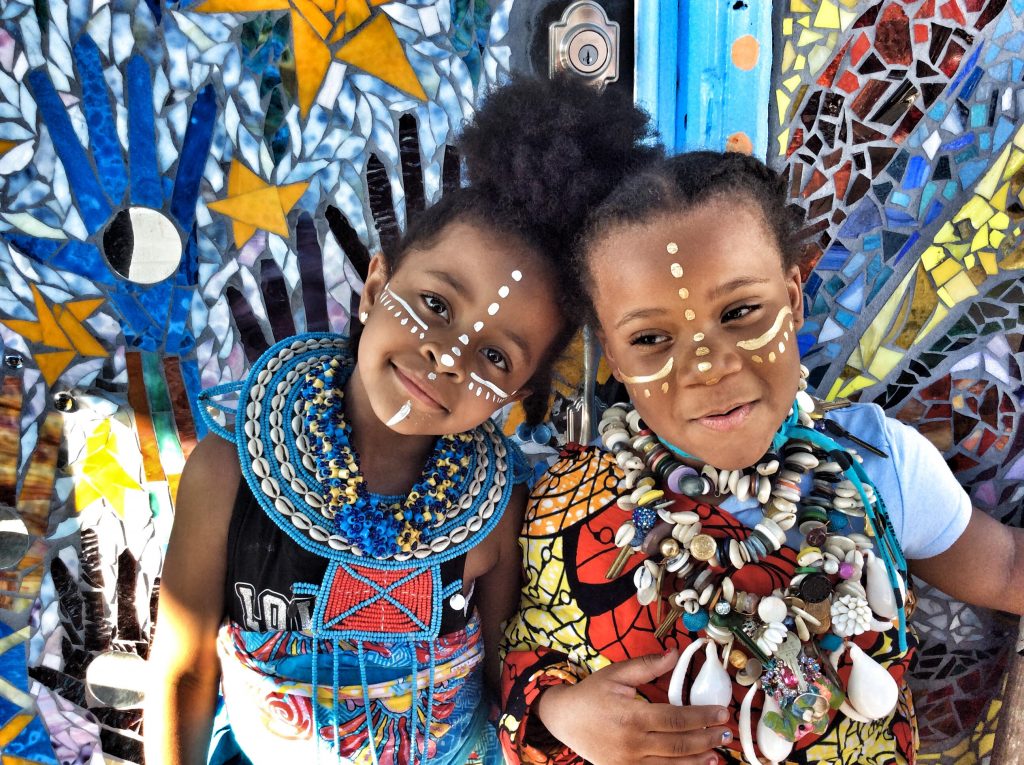
Girls at ARThouse. © Vanessa German, 2016. Courtesy of the artist.
Covered in glass mosaics and colored in a deep, electric blue, ARThouse serves as a refuge for young people to create art, to feel beautiful, to be transformed, to be joyous, to engulf themselves in the fantastical elements of art and engage in both communal and individual supreme healing. Providing women of color and queer people free art workshops, classes, and a safe space for folks in the neighborhood to simply thrive, German asserts ARThouse is an intentional and strategic forum to uplift the minds, the bodies, and the spirits of the people in her neighborhood through artistic expression and the imaginative. To her, this is the very essence of what she calls “citizen artistry.”
“I honor the fact—and when I say honor—I honor my place and my identity as a citizen artist,” German says. “To be a citizen is to be active. To be a citizen is to be responsive. To be a citizen is to be generative.”
In rebuilding confidence, trust and promoting nonviolence, German also expresses there is a side of her artistry that is invisible; an intangible aspect that she describes as the “work of the soul.” While German recognizes the pain and resistance of talking about the gun violence that persists in her neighborhood and beyond, ARThouse, her power figures and her overall work promotes art as an intrinsic and potent vehicle to healing and accessing spaces of sorrow which are suppressed, unnoticed, or not discussed. Her space is a conduit for people in Homewood to express both their conscious as well as their unconscious selves. This is the invisible side of her work. And it is this very side of herself and her artistry that she wants to share with the world.
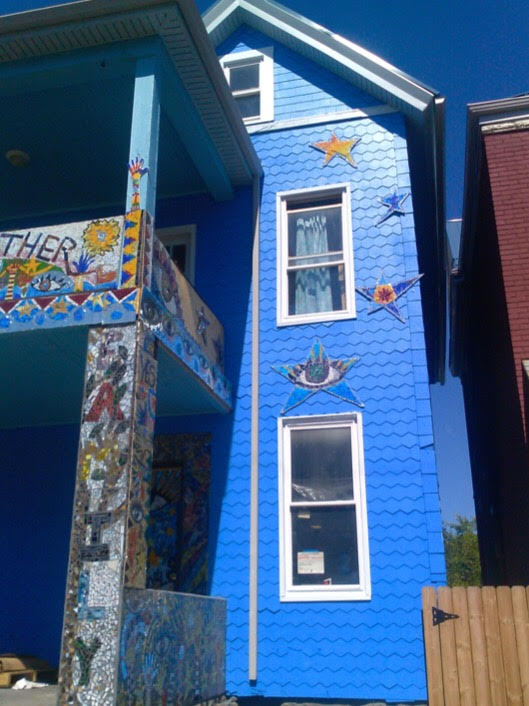
Outside of ARThouse. © Vanessa German, 2016. Courtesy of the artist.
“My neighborhood is a majority Black population that is being actively gentrified,” German says. “It is considered to be “economically depressed” but I know what “economic depression” means for those who have Black and brown skin. So, when I talk about my neighborhood, I don’t talk about it like there is something wrong with Black people or as if there needs to be work done that is anything separate from deep justice and love.”
German has a lot of heroines in her life, many of them being other pioneering, Black female artists like Carrie Mae Weems, Betye Saar, and Renee Stout. However, German says that it is the women in her neighborhood who inspire her the most and they serve as some of the ultimate power figures in her life. It is these women who carry a unique type of healing power. It is these women who are using the power of their femininity to foster change and hope in countering gun violence in their communities and beyond.
“Now, I don’t want to sound like an after-school special for Black single mothers or indigenous women or anything, but when you see the power that women carry in their tenderness and their instincts it is so amazing,” German says. “The fact that some women know to put a pot of greens on the stove because they know someone who is hungry will come to the house—that is instinct. The way women access [its power] is a world-shifting thing. And I see that all the time.”
♦
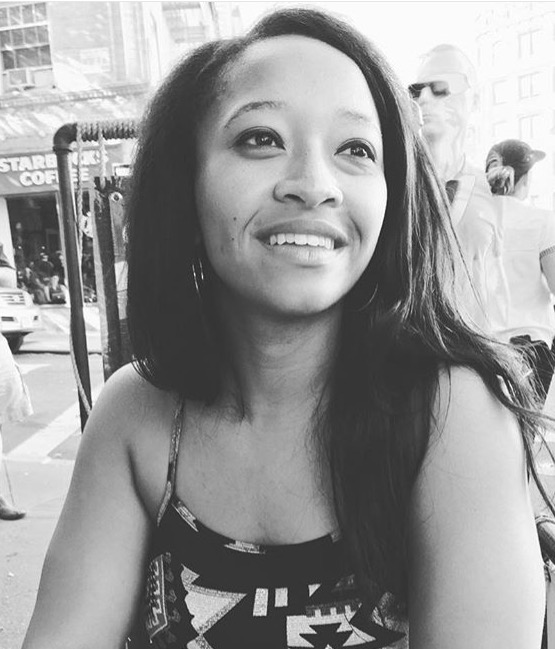
JAIMEE SWIFT
Jaimee Swift is a PhD student and graduate fellow at Howard University, studying the intersections of race, gender, ethnicity and politics within the Afro-Brazilian Women’s Movement. She is also the first Editor-at-Large for Howard University’s The Hilltop newspaper. Holding a Bachelor of Arts in Communications and Master of Arts in Political Science from Temple University and Howard University, respectively, Swift is passionate about racial and social justice, gender and health equity. She’s been published in The Huffington Post, The Grio, For Harriet, OkayAfrica, Blavity, Heed Magazine, Salon.com, and more. Prior, Swift was a Global Health Corps Fellow, and served as the managing editor of Safe magazine, the first-ever digital magazine focused on the global epidemic of violence against children. Her awards include the National Association for Black Journalists’ Allison E. Fisher Scholarship, the Vira I. Heinz Women in Global Leadership Scholarship, and the Lew Klein Excellence in Media Award. Follow her @JaimeeSwift.
OF NOTE Magazine is free to readers, free of advertising, and free of subscriptions—all made possible by generous supporters like you. Your tax-deductible gift will help us continue to feature innovative and emerging global artists using the arts as tools for social change.
OF NOTE Magazine is a fiscally sponsored organization of the New York Foundation for the Arts, a 501 (c) (3), tax-exempt organization. All donations are 100% tax-deductible to the full extent of the law.



